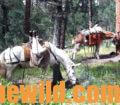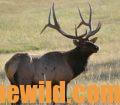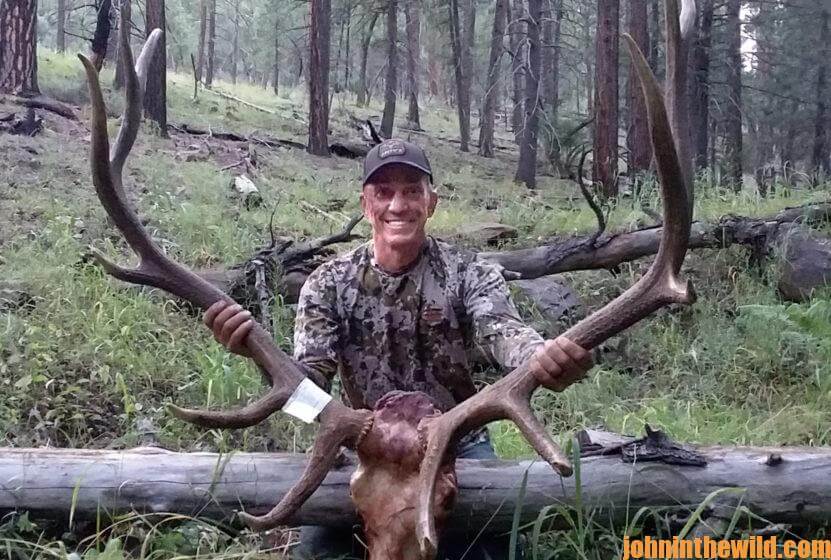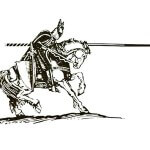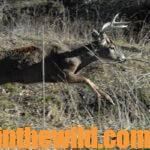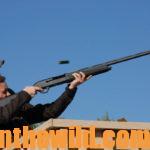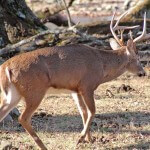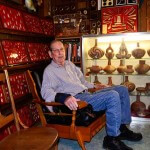Editor’s Note: 54-year-old Billy Bishop grew up in the White Mountains of Surprise, Arizona, and today lives in Buckeye, Arizona. He’s been an elk and mule deer guide since he was 19 and currently operates Blue Wilderness Guide Services (https://www.gohunt.com/outfitter/blue-wilderness-guide-services). His dad, Bill Bishop, was a construction worker during the spring and summer. When the weather wasn’t good, Billy and his dad trapped when fur was still selling at good prices. Once fur prices plummeted, Bill Bishop began to guide to elk and mule deer, and his son Billy became his first employee. The Bishop family has trapped, hunted and guided together most of their lives. Both archery enthusiasts, Bill and Billy have used their bows to take elk, mule deer and Coues deer when not trapping or guiding. “Over the years, I’ve called in more than 30 serious bull elk that my clients and I have harvested,” Billy Bishop, the son, reports. Billy Bishop hunts in the extreme backcountry and most often packs into wilderness areas on horseback, setting-up spike camps from where he and his clients can hunt during the season. Billy prefers to hunt what he calls “The Old Country,” areas where many older Bull elk go to retire and dodge hunters. The terrain is very brushy there and, in many instances, very steep in these regions. He’s not hunting private lands but rather Bureau of Land Management (BLM) lands (https://www.blm.gov/arizona), which is for the most part, public-hunting lands. To learn more about Billy Bishop you also can visit his Facebook page at https://www.facebook.com/BlueWildernessGuideServices/.
Back in the day, when my dad and I were trapping fur, we befriended one of the cattle ranchers who leased the grazing rights for his cattle on some great U. S. National Forest Service land (https://www.fs.usda.gov/). My dad and I trapped the predators that would kill and eat the rancher’s cows, and when my dad wanted to go hunting, the rancher would let us use his horses.
The name of the head guy at this ranch was Nacho. He probably was the most-serious cowboy I ever met. While riding down the trail, Nacho could see elk tracks from the saddle that would require me to get down on my hands and knees. Even more surprisingly, he could tell how many hours had passed since an elk had been on the tracks. Nacho’s job was to keep all the trails clean for the 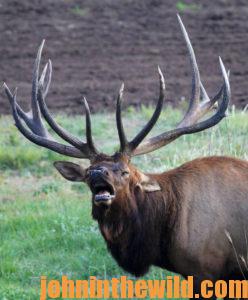 cattle and cowboys to use. So, when Dad and I first started trapping this property, Nacho and the other cowboys showed us all of the trails they used, the trails the cows used, and the blaze trails (see printouts) that the U.S. Forest Service created. These cowboys gave us a good education on elk trails and also on other animals that lived on that property, such as deer and elk.
cattle and cowboys to use. So, when Dad and I first started trapping this property, Nacho and the other cowboys showed us all of the trails they used, the trails the cows used, and the blaze trails (see printouts) that the U.S. Forest Service created. These cowboys gave us a good education on elk trails and also on other animals that lived on that property, such as deer and elk.
One of the older cowboys, Jim Grammar, had a nephew who’d drawn a tag to take an elk on that section of U.S. Forest Service land. When Grammar contacted me and asked if I would guide his nephew on his elk hunt, I was honored. Jim Grammar was a legendary cowboy in the country where we would be hunting, because he kept up with cattle in some of the roughest parts of the state. We called Grammar’s nephew, the Nephew.
Two weeks before the hunt, I scouted bulls for the Nephew and found older-age-class bulls living in mesquite territory. At that time, most hunters didn’t know that elk would live at an altitude that low. These bulls were located along the boundary line of the San Carlos Apache reservation (http://www.sancarlosapache.com/home.htm). While watching animals cross the fence, I spotted a bull with a 9×11 rack – a real monster and the biggest, most-beautiful elk I’d ever seen. I figured he would score at least 450 inches.
While hunting with the Nephew, we spotted the same big bull elk come out of a creek below us. This was one of the most-amazing sights I’d ever seen – he had 25 cows and a dozen satellite bulls with him. From where we were standing, the wind would have carried our scent right to the herd, so we circled around the elk to come from the opposite direction. The stalk to get to the elk took about 4 hours, and the entire time we were on our stomachs, crawling past big bulls looking straight at us trying to determine exactly what we were.
Once we got close, we looked across an opening and saw the big bull bedded-down right in the middle of a bunch of cows. The Nephew couldn’t get a shot, although we were only about 40-yards away from the bull. I knew that we couldn’t get any closer to the herd without being seen. I had to do something to get the bull to stand up, so I gave a light cow call. The bull jumped up and started 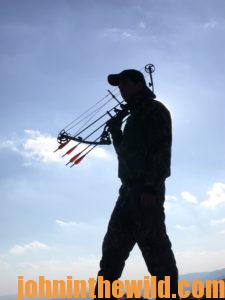 walking toward us. When the bull came within 17 yards, he screamed so loud that the hairs on the backs of our necks stood up. The Nephew used me as a shield, and when the bull looked away, I whispered, “Draw.”
walking toward us. When the bull came within 17 yards, he screamed so loud that the hairs on the backs of our necks stood up. The Nephew used me as a shield, and when the bull looked away, I whispered, “Draw.”
The bull was downhill, quartering away from us. Since I was kneeling down, the bull couldn’t see the Nephew nocking his arrow. Once he was at full draw, I leaned over to clear a shooting lane for him. The Nephew released his arrow, and I saw the broadhead barely touch the bull’s back. When that happened, the huge bull, his cows and the satellite bulls exploded and started running in all directions. I watched the monster bull elk race down the draw and then come out on another ridge. All the other elk had vanished. I asked in disbelief, “What just happened? How did you miss that bull?” In that instant he wasn’t able to tell me, however, when he checked his bow, he noticed that one of the screws on the bow was loose.
Since this was a 14-day hunt, we spent every day after missing this monstrous bull trying to find him. Finally, on the 12th day of the hunt, we spotted the group of satellite bulls that had been traveling with the big bull and his harem of cows. These bulls ranged from 360-380 inches, came out of the flats and then moved up into a canyon. I told the Nephew, “Let’s go take a look at these bulls. We should be able to see them from the top of this canyon.” We couldn’t see the bulls from the top of the canyon like we thought we’d be able to, and the bulls started climbing up the opposite side of the canyon wall – about 200-yards away. Once they dropped over one side of the canyon, they came up the other side where we were. After that, the Nephew and I decided to go look at the bull.
One of the bulls had a really-nice rack. To get a closer look, we slid down the canyon and climbed the mountain to the top of the ridge. When we reached the ridge top, I had my hand on the Nephew’s shoulder to keep him from walking too fast. In my other hand was my range finder. Finally, we found the bull lying down – right at the point of the ridge. He didn’t see or hear us because he was looking to the west, down at a dirt water tank. Since the top of the ridge was rocky we knew we couldn’t be as quiet as we needed to be. I gave soft cow calls and young bull calls, but the elk wouldn’t even turn around to look at me. I figured that he thought the bulls and cows would be making their way toward him. So, I started blowing my bugle call as loudly and as hard as I could to imitate the herd’s call. The bull still wouldn’t look at us. Perhaps he was thinking, “I’m tired, and I‘ve been fighting all night. I just want to stay on this point and go to sleep.” We kept taking small steps until we were within 42 yards of that bedded-down bull.
I whispered to the Nephew, “You wanna take this bull?” He whispered back, “Yeah, I want him.” “Then go ahead and put an arrow in him,” I said. This bull was a 7×7 and even though we had  several more encounters with the monstrous bull after the Nephew missed him, he only had two more days in his hunt and just couldn’t pass this satellite bull up. When I said, “Put an arrow in him,” the Nephew responded, “But he’s lying down.” I told him that if I tried to get the bull up he probably wouldn’t get a chance at him because the bull would jump up and run. “Aim right behind his back rib, and visualize the arrow hitting him, traveling forward and exiting right in front of the opposite shoulder,” I told the Nephew.
several more encounters with the monstrous bull after the Nephew missed him, he only had two more days in his hunt and just couldn’t pass this satellite bull up. When I said, “Put an arrow in him,” the Nephew responded, “But he’s lying down.” I told him that if I tried to get the bull up he probably wouldn’t get a chance at him because the bull would jump up and run. “Aim right behind his back rib, and visualize the arrow hitting him, traveling forward and exiting right in front of the opposite shoulder,” I told the Nephew.
His arrow flew straight toward the bull. When the elk took the arrow, he jumped up, ran down into the canyon and disappeared. Everything happened fast. I knew the Nephew hit the bull but couldn’t tell exactly where. We waited for about 45 minutes and went to the spot where I thought the arrow had hit the bull. However, we couldn’t find any blood or an arrow. I followed his tracks down into the canyon. Once I reached the bottom, there were a multitude of elk tracks going up and down the canyon. Finally, I called a ranch hand to help. He drove on top of the ridge above us. Then as he walked off the ridge, he looked to the south side of the big canyon. I called him and said, “I’m sorry I just don’t know where that bull went.” “You mean that bull right there?” he pointed and said.
The big satellite bull had gone up the right side of the canyon and bedded-down. We learned later that the Nephew had hit the elk in the hindquarters instead of right behind the last rib. I told him, “We have one last chance to get the elk.” Since the canyon wall was very steep, I pushed the Nephew forward to help him climb. When we neared a little bushy tree, I told him, “Get an arrow nocked, and be ready to shoot.” 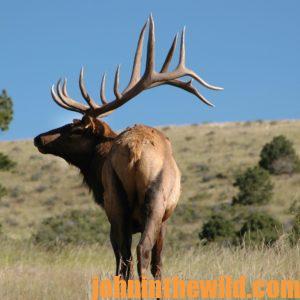
The elk was 35-yards away. Once he went over the top of the canyon, I ran up the canyon wall. I knew that there was a lot of open flat land on the other side of the canyon and that if I could get to the top of the canyon, I should be able to see the bull bedded-down. Reaching the top, I saw the bull. But he kept going, until he finally went over a ridge where another dirt water tank was. Once the Nephew got to the top of the ridge, we started going after the bull. By that time, dark had fallen, and we decided to return to the ranch house.
The next morning, we got up and went to a neighboring rancher’s house, because we knew he had an airplane. Our plan was to fly over the canyon to spot the wounded elk from the air. However, after making several passes over the area and never spotting him, we returned to our base camp. Next, we got in my truck and drove to the last place I’d seen the elk drop into the canyon. Getting out of the truck, we heard crows screaming and coyotes howling. I told the Nephew, “I need to go where those critters are because they might have found your elk.” I got my radio and took off running, but before I could reach the critters I heard the Nephew on the radio saying, “Come back to the truck. I found my bull!” The Nephew had walked away from the truck, down the canyon and nearly stumbled over the bull.
“Is he dead?” I asked. “No, he jumped up and ran off,” the Nephew answered. I asked, “Why didn’t you shoot the bull?” The Nephew told me, “My bow and arrow are in the truck.”
The Nephew got his bow and arrows, and I started using my binoculars to track the elk. Finally, I spotted the bull. Again, I put the Nephew in front of me. With one hand on his shoulder and the other holding my range finder, we walked very slowly, while approaching the elk. When we were 45-yards from the bull, he stood up. The Nephew’s arrow hit the bull, and the elk went down, started kicking and then got back up. I told the Nephew to put another arrow in him. The bull was wobbling from the arrow hitting his front elbow.
Well, I was certainly frustrated. First, the Nephew missed one of the biggest bulls I’d ever seen, and then he shot this elk in the elbow. But finally he made a good hit after shooting his third arrow. I looked at my watch and realized that we’d been hunting this bull elk for 24 hours. We field dressed the elk, knowing that there was no way we could get the truck close enough to pack the meat out and get it onto the truck. After a while, we left the bull where he was, returned to the camp house and got horses and panniers to pack out the elk’s head and meat. We tied the meat up and hung it in the trees to let it cool overnight – a process that made the meat somewhat firmer and easier to carry and put a nice crust over it, making it a lot cleaner. In the end, this satellite bull that we hunted for 24 hours wasn’t nearly as big as the herd bull that the Nephew missed, but he still scored 373 inches.
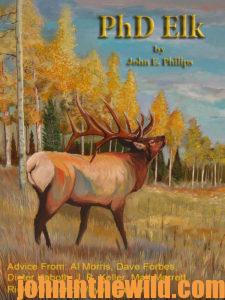
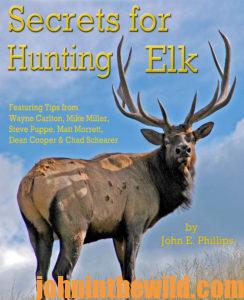 To learn more about elk hunting, check out John E. Phillips’ books, “PhD Elk: How to Hunt the Smartest Elk in Any State” and “Secrets for Hunting Elk,” both available at http://amzn.to/WkbAWa and http://amzn.to/WGb9le.
To learn more about elk hunting, check out John E. Phillips’ books, “PhD Elk: How to Hunt the Smartest Elk in Any State” and “Secrets for Hunting Elk,” both available at http://amzn.to/WkbAWa and http://amzn.to/WGb9le.
Tomorrow: Billy Bishop Hunts a 360-Inch Bull Elk

